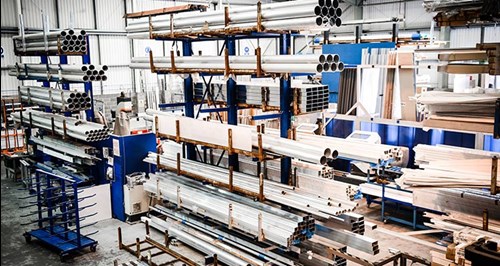Case Study: Twinfix- Made Smarter
Made Smarter helped the business during lockdown

It employs around 50 people and has worked on key national projects including the Millennium Dome.
COVID-19 forced Twinfix to shut most of its operation, furlough the majority of its workforce and use the time to strategically consider its options.
“It was a confusing and worrying time for everyone,” Dan explained. “Manufacturing closed first, then the offices. We then started working on finding solutions to restart safely.”
Its search for answers highlighted an over-reliance on outdated manual processes, first revealed during the digital transformation workshop.
Dan said: “There is a huge amount of human intervention and manual transfer that happens between departments, which slow us down and open us up to mistakes.
“For instance, between design, manufacture and delivery, if a human error is not picked up, you have to start again, remanufacture and redeliver. This costs you a day, sometimes more, and the cost of reproducing the part.”
The Solution
In order to restart, Twinfix established remote working capabilities with key staff using laptops and Microsoft Teams for conferencing capabilities.
Daily video conferences were used to support and keep up morale during the mentally taxing period.
The management team then focussed on developing risk assessments and finding solutions to reopen each business function.
For the factory, offices and canteen, social distancing markers and segregation measures were put in place, and sanitiser and PPE were brought in.
Twinfix was able to upload the design schedule to the Microsoft Teams planner function which gave management complete oversight of workforce and workflow.
In the meantime, Dan remained enrolled in the leadership programme which, while unable to meet for its monthly sessions and scheduled site visits, went online with virtual tutorials and regular catch ups.
The Benefits
Having its traditional methods disrupted forced Twinfix to find other, and in some cases, better, solutions.
For instance, analytics capabilities in Microsoft Teams helped management personnel to schedule design workloads better and recognise the achievements of individuals as well as the wider workforce.
The true silver living for Twinfix is that technology has proved to be the answer to most of its problems, and as a result it has broadened the scope of its digital transformation.
“The transformation workshop was a positive experience which brought the key decision makers together, allowed us to take a step back and recognise the bigger picture,” Dan explained. “The pandemic has illuminated countless more ways we can add value to the business, making us more efficient and produce a better quality product at the end of it.”
Among the key technology projects being explored, is a software solution to improve data transfer between its design systems and CNC machinery which will improve speed, efficiency and accuracy, and in turn reduce snagging errors by up to 70%, driving up sales and increasing profit.
Other ideas inspired during the pandemic are the need to upgrade IT systems for more agile and remote working, electronic fob systems to replace the manual signing in system, giving installers digital packs on tablets rather than paper forms to handle, and introducing digital proof of deliveries.
Another benefit Twinfix experienced was the support from the leadership programme.
“There is an impressive bond of trust between the cohort, which meant I felt I could talk about the company and our challenges openly,” Dan said. “During the crisis we have actually stayed in touch more than I suspected we would, talking about the challenges and sharing ideas about how to navigate it.”
The Future
While it attempts to return to the so-called new normal, Twinfix is redeveloping its digital roadmap and taking on board the learnings from the leadership programme.
The next step is adopting technology.
“Our approach to new technology has always been responsibly cautious,” Dan said. “No one wants to be left behind, but it’s easy to get carried away. “The last thing we want is an expensive white elephant in the corner of our factory because we didn’t take the right approach and get the right expert help and advice.
“We are blessed with a fantastic team at Twinfix and there is an ethos that the people who use new systems must be involved in their development and help create the solution to the problem.
“We need to take our time, bring everyone along and make the right decisions. The pandemic has got us moving faster towards our goal.”

 Case Study
Case Study